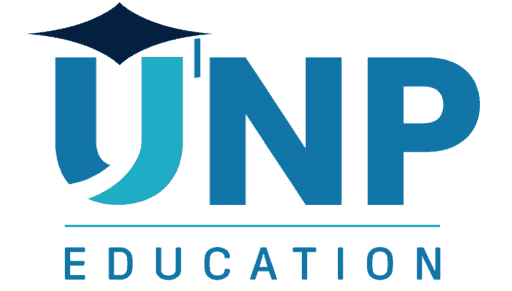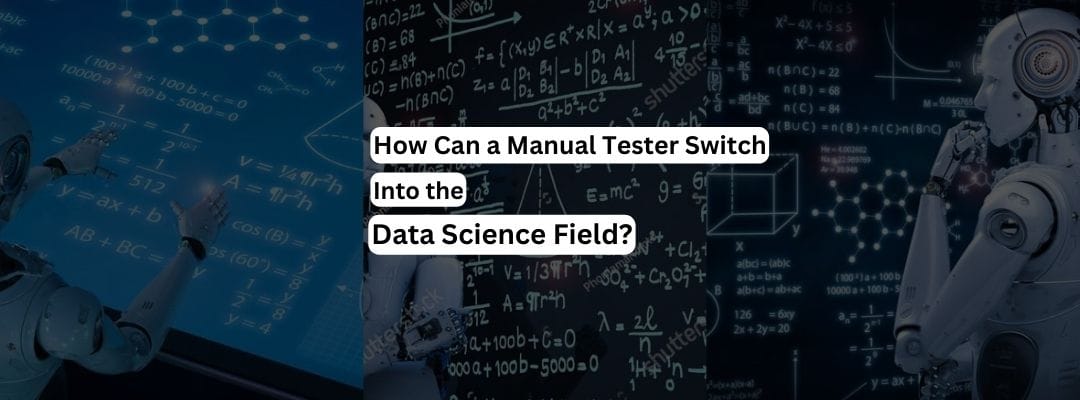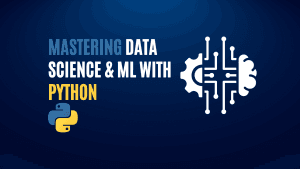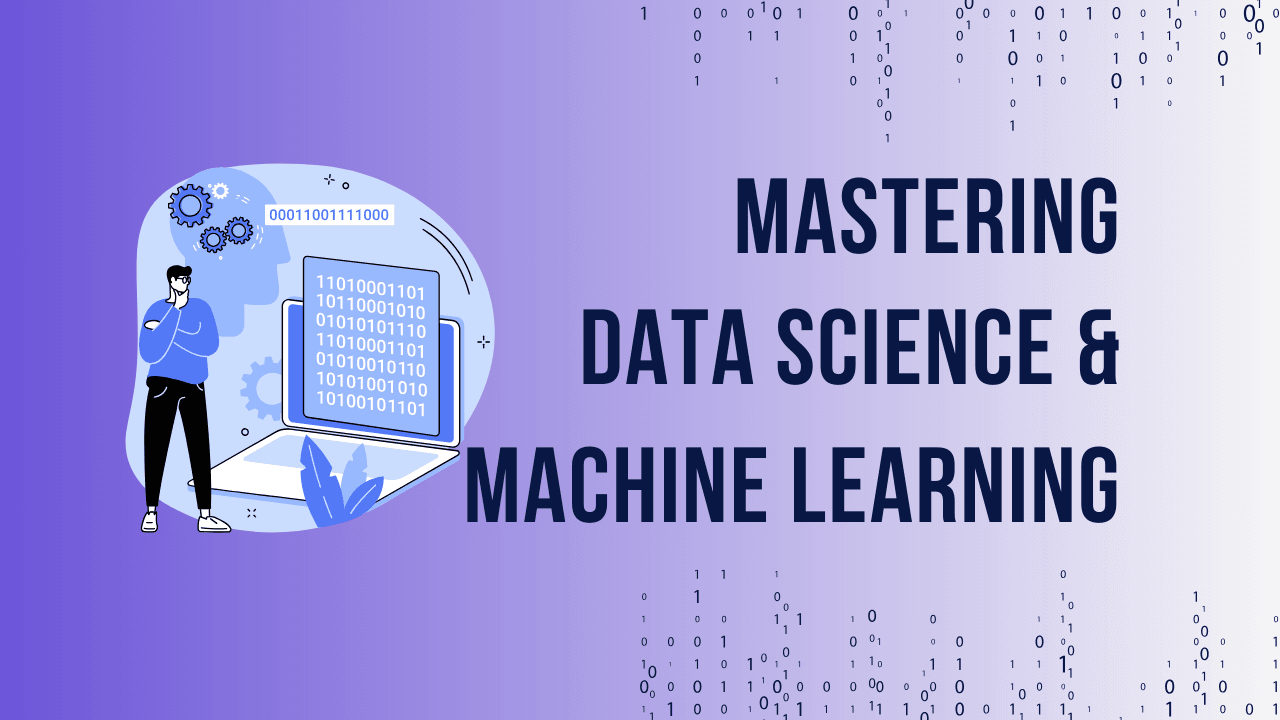Table of Contents
Toggle1. Introduction
There is a tendency among most manual testers to be at a crossroads on how to shift into more data-centric fields, such as data science. Manual testing is the verification of the work done through the software that ensures it works as intended. Data science is the extraction of insights from data to solve problems. However, despite the differences, transferable skills can make this transition possible.
Now, breaking that question down into actionable steps, “How can a manual tester switch into the data science field?” makes it an achievable transition for anyone determined to take on this career switch.
Ready to take you Data Science and Machine Learning skills to the next level? Check out our comprehensive Mastering Data Science and ML with Python course.
Our Students Testimonials:
2. Differences Between Manual Testing and Data Science
On the surface, manual testing and data science are probably two concepts belonging to different worlds altogether. Where manual testing generally deals with checking software functionality, data science focuses on analyzing large sets of data to find insights. And some core differences are:
Skills Needed: As for manual testing, detailed attention and insight into software behavior are required. For data science, programming, statistics, and analytical thinking are required.
Tools Used: In this context, as manual testers use tools such as JIRA and Selenium, whereas data scientists depend on Python, R, along with other data visualization tools that are used in Tableau and Power BI.
Approach: whereas manual testing tends to be more reactive (covering bugs), data science is proactive, targeting a predictive kind of analytics and discovering patterns in data.
While the spaces are different, hands-on testers can bring a different kind of problem-solving mindset into data science.
Ready to take you Data Science and Machine Learning skills to the next level? Check out our comprehensive Mastering Data Science and ML with Python course.
Our Students Testimonials:
3. Why Manual Testers Are Suited for Data Science
This person is naturally detail-focused and good at problem-solving-the kind of skills required in data science. Here’s why they are the best fit:
Detailed Attention: This particular task requires awareness of the system and close attention to anomalies, a good fit for data cleaning and validation.
Logical Thinking: Testers perform sequentially in the reproducing of bugs and then design their test cases, which mirrors the logical processes of data analysis.
Documentation Skills: Writing detailed test cases and bug reports will help to hone documentation skills, which are necessary for presenting data insights.
This represents a good anchor for entry into the world of data science, even if some further technical skills must be acquired.
4. Problems in Implementing Change:
While it is possible to migrate from manual testing to data science, it’s definitely not something that happens overnight:
Learning to Code: A manual tester may not be particularly familiar with the languages Python or R, and foundational to data science. Of course, starting from square one is daunting; however, there are thousands of gentle resources for newcomers.
It is the shift to a data-driven thinking-translation of the data into actionable, meaningful insights or conclusions rather than traditional, functionality-based manual testing.
Overcoming Imposter Syndrome: Many manual testers feel out of depth due to their entry into the field which requires very complex mathematical concepts. What is required is constant motivation to remind people that time takes everything to learn.
Ready to take you Data Science and Machine Learning skills to the next level? Check out our comprehensive Mastering Data Science and ML with Python course.
5. Acquiring the skills for Data Science
To actually transition into data science, manual testers would need to obtain the following skills :
Programming: The most-used language in data science is Python. One would begin with basic Python and library use, like Pandas and NumPy.
Statistics: One would then comprehend how data gets distributed from a solid grounding in statistics and hence what it means.
Machine learning: Understanding algorithms such as linear regression, decision trees, and clustering is important for the role of a data scientist.
We can now represent the results using these tools-power BI or Tableau-to be more presentable and efficient.
Using the skills he attained, manual testers can now venture into the beautiful world of data science.
Ready to take you Data Science and Machine Learning skills to the next level? Check out our comprehensive Mastering Data Science and ML with Python course.
6. Building a Foundation in Programming
Next, the most important technical skill for a data scientist is programming. You have already crossed the hurdle of knowing about manual testing and will, therefore, be familiar with test automation, which will help you get into a running start in learning Python and R.Begin with the basics-variable declarations, loops and functions. There are online courses and tutorials that lead one through this process.
R: While Python dominates the field, it also has many users in the data science community who use it heavily for statistical analysis.
Data structures: Understanding arrays, lists, or dictionaries is extremely important for manipulating data.
Once one learns the basics, a large reservoir of data manipulation libraries like pandas and NumPy can be explored.
Ready to take you Data Science and Machine Learning skills to the next level? Check out our comprehensive Mastering Data Science and ML with Python course.
7. Manipulating and Analyzing Data
At the heart of data science lies data manipulation. Learning to work with libraries like pandas (for data manipulation) and NumPy (for numerical computations) is key
Data Cleaning: As a manual tester, you’re already familiar with looking for errors—data cleaning requires the same attention to detail. Removing duplicates, handling missing values, and transforming data types are common tasks.
Exploratory Data Analysis (EDA): Descriptive statistics and data visualization, along with hypothesis testing, can help in understanding the data.
An important step in this transition from a manual tester to a data scientist would be learning how to capture and analyze data.
Our Students Testimonials:
8. Understanding Machine Learning Algorithms
It is on this exciting part of data science that machine learning lies – the ability of a computer to learn without explicitly being programmed.
Supervised Learning: These algorithms are linear regression and decision trees, and they need the labeled data. These are widely used in predictive analytics.
Unsupervised learning Algorithms such as clustering allow finding any hidden patterns in data without having defined labels.
Understanding these concepts will enable manual testers to use their problem-solving skills in a new context.
Ready to take you Data Science and Machine Learning skills to the next level? Check out our comprehensive Mastering Data Science and ML with Python course.
9. Getting Experience in Data Visualization
Not only does data science include analyzing the data but also presenting the data in a very clean and easy-understood form. The two finest tools that suit this intent best are Power BI and Tableau, converting raw data into insightful dashboards.
Storytelling with Data: Like writing very detailed test reports, data scientists should tell a story with data. Charts and graphs should help the stakeholders make wise decisions.
Key tools: The visualization tools include Tableau, Power BI, and Matplotlib.
Mastering these tools shall make you standout, especially in your applications for data science jobs.
Ready to take you Data Science and Machine Learning skills to the next level? Check out our comprehensive Mastering Data Science and ML with Python course.
10. Upgrade Your Knowledge Base About Data Science
Manual testers are usually domain bound, for example in health or finance. Similarly, the applications of data science are also domain knowledgeable.
Common sectors that use data science in practice are retail, healthcare, and finance.
Then comes a way to derive actionable insight, namely knowing how to structure a business problem into data terms.
Developing domain expertise is bound to really help a person improve in data science, building more relevant models and solutions.
FAQs
Is it possible to switch from manual testing to data science?
Yes, with dedication and learning the necessary technical skills, manual testers can transition into data science roles.
What skills do manual testers need to learn for data science?
Programming languages like Python, data manipulation, machine learning algorithms, and data visualization are key skills required for data science.
What programming language should a manual tester learn for data science?
Python is the most recommended language for data science due to its versatility and extensive libraries.
Do manual testers need to know machine learning for data science?
Yes, understanding machine learning algorithms is essential for many data science roles, especially those that involve predictive analytics.
How long does it take to transition from manual testing to data science?
The timeline depends on the individual’s prior experience and learning pace, but with consistent effort, the transition can take anywhere from 6 months to a year.
Our Students Testimonials:
Ready to take you Data Science and Machine Learning skills to the next level? Check out our comprehensive Mastering Data Science and ML with Python course.



